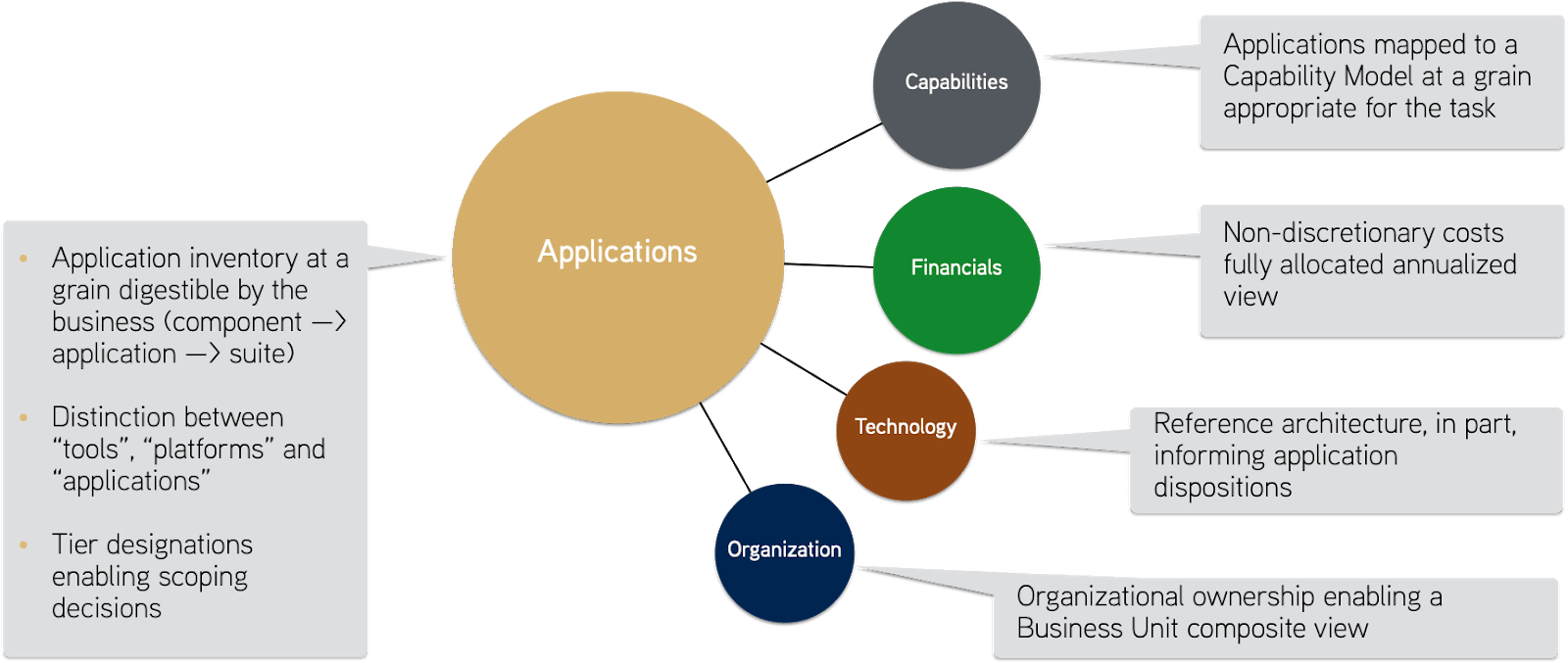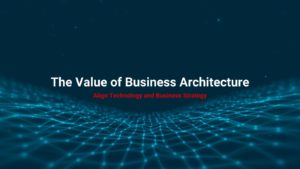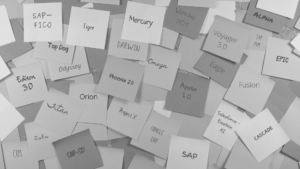In this recent classic video, Charlie discusses the importance of Portfolio Modernization during an Executive Speaker Series entitled Reinventing the Enterprise hosted by Dialexa. This pandemic has accelerated the pace of change and raised expectations for a variety of digital services including customer and employee self-service, telemedicine, education, remote work, paperless workflow, etc. The importance of agility in this accelerated future reinforces Charlie’s message “You can’t have business agility with technical rigidity”. Business agility requires the right organization and architecture. Portfolio Modernization can help you get there.
In this article, I will dive a bit deeper into what’s truly required for selling the effort and, once sold, executing.
Selling the Effort
We all know the impacts of an outdated legacy environment:
- Applications are hard to change due to a patchwork of tactical decisions over time.
- Even minor enhancements take too long to implement due to the complex dependencies between redundant and overlapping applications.
- Fragile legacy applications run on antiquated or unsupported platforms which inevitably translates into higher support costs and business continuity risks.
- Forced to maintain resources and skills in a wide technology footprint that could be better leveraged against more common computing styles & stacks.
- Functional redundancies exist across the application portfolio, increasing overall run costs, and adding to the complexity of the operations.
- Run costs consume too much of the IT budget, limiting the ability to deliver new capabilities.
The value proposition of a Portfolio Modernization effort is broad. It allows you to reduce non-discretionary expenses, create room for discretionary investments, increase staffing flexibility, and create a more adaptable architecture (see figure 1).

Figure 1
These outcomes are necessary to enable the agility that will be required as we shift to playing offense on the other side of this crisis. As you make the case for investing in modernization efforts, ensure the business has a holistic understanding of the enterprise-wide benefits that will be gained and look for other influential leaders to take joint ownership of the problem with you.
When we discuss selling a Portfolio Modernization effort, we stay away from one at a time ROI justifications of retiring individual applications. A better tact is to “justify big” → focus on the longer term discipline required and the big picture story it can deliver. We talk about the big moves; shifting from a high percentage of non-discretionary expenses to a more manageable level, the incremental development bandwidth we can gain from that reduction and the productivity gains that come with improved architecture and staffing flexibility.
Storytelling is important in selling the effort. If you can relate this effort to an analogous business investment, shared mental models can be found. For example, any railroad operations executive clearly understands the need to maintain and periodically replace rail, cars, locomotives, etc. If he doesn’t, the operation becomes brittle, has frequent disruptions, creates customer service issues and delivers poor financial results. There are parallel stories across industries. Airlines know the value of a modern and well maintained fleet. Retailers know the importance of keeping the store experience fresh. The ability to draw a corollary from well understood business needs like these to the IT application portfolio is an effective way to gain support.
Another important aspect of selling is understanding the receptiveness of your audience. Historically, the business may have resisted application consolidation based on nuanced and/or real process differences, as well as concerns over control and speed of change in a shared model. Today, however, you may find much more willingness on the part of stakeholders, like a CFO that now understands the opportunity, and the need to put their shoulder behind IT on this effort to fundamentally reduce both cost and risk.
As Charlie likes to say, “CFOs care about cost; CEOs care about speed and agility; Boards care about risk.” There are great stories to tell on all of these fronts. Selling long-term investments into today’s headwinds can be tough, but it can be done. Tailor your message to your audience, sell what you believe is critical to the business, focus on telling a compelling story and create joint ownership of the need for consistent investment over time.
Executing on Portfolio Modernization
On the execution side, decisions should be data-driven. As Russell Villemez described in his blog post, Data-Driven Digital Transformation, taking a data-driven approach to transformation creates an ability to understand your organization at a depth that stories alone can’t tell. There’s truth in the data, and the conclusions drawn from it are often a surprise to the stakeholders themselves.
Being data-driven requires a Cube. Portfolio Rationalization requires the following domains from the Cube:

Figure 2
Execution generally flows as follows:
1. Inventory your applications
The inventory should be geared toward the eventual goal of presenting a Business Unit view of business applications. Define an application at a level that is easily recognized by your business partners and try to be inclusive of shadow IT systems where possible.
2. Map to capabilities
The goal here is to enable the identification of redundancies. Mapping at a surface level (ie. level 1) can lead to incorrect evaluations. Mapping at a detail level (ie. level 4-6) can be a massive effort and may not add value to the analysis. Be balanced and gear the mapping to a grain that supports the insights you need from it.
3. Assign costs
Costs assigned to applications are for decision making and should not strive for accounting level precision. The assignment of these costs is a byproduct of direct costs where known, through various allocation models to get to a total non-discretionary number. Again, this is decision making focused and should not be the basis for a chargeback function.
4. Determine future disposition for each application
Application dispositions are really a byproduct of your broader technology strategy. Here, strategy reflects how you think about renovation vs. large scale rip & replace tactics. Sometimes, replacing a significant portion of your legacy application portfolio is the smart move, as long as your targets are appropriately selected and there is discipline to keep the vendors’ “platform plays” from creeping into unintended areas of your architecture. There’s often very valuable business logic in legacy applications that can be exposed by rearchitecting or replatforming with less cost and risk than a full replacement approach. As you work your way through these decisions, look for applications that don’t align with the reference architecture you’ve developed. Applications that are past their support end of life are clearly candidates for retirement. Finally, the functional side of the solution, and how well it enables the desired business capability, is an important consideration.
5. Align with the business
Joint ownership with the business is required,and the earlier you can engage the better. Our standard playbook is based on the idea of business engagement throughout. It’s the reason we gear our application inventory and assign costs the way we do. As with the broader transformation effort, find and engage your Game Changers as you enlist support.
6. Establish the plan
The end result of this effort is obviously the Portfolio Modernization plan. This plan needs to be sequenced and paced based on organizational impact (business & technology) and investment appetite. The important point here is to justify big, have a plan, and continue to develop the organizational discipline to stay focused on these efforts over time.
7. Execute small
“Justify big” doesn’t mean big bang implementation efforts. Decompose that plan into small, executable components and begin to knock them down one after another. Continuous delivery of small modernization efforts creates immediate value for the balance of the portfolio and lowers risk.
As we all know, these efforts shouldn’t just be a response to a crisis. That being said, leveraging the need for accelerated change created by this crisis can be a means to an end. Good habits on continuous improvement, and good hygiene for the application portfolio, will both deliver on the benefits we’ve discussed here and leave you in a fundamentally different place when the next event happens. Hopefully, that next event isn’t a pandemic. But, imagine how different things would be the next time you went through an acquisition/merger, a major ERP implementation, a significant business model pivot, etc. It’s always a good time to have a solid foundation.
Further Learning
Many of these concepts are covered in depth in The Feld Group Institute’s Transformation Leadership Development and Operationalizing Enterprise Architecture courses.
Author: Mark Canada, Affiliate, The Feld Group Institute, and Principal, Dialexa – a Feld Group Institute partner.
Dialexa builds product experiences that drive true innovation in businesses around the world. We have been the arsenal behind more than 100 companies, turning “back of the napkin” concepts into real-world, powerful business solutions. What sets us apart is our relentless commitment to what we refer to as our Collaborative QualityTM process. Through this process, we develop a thorough understanding of our client’s customers and build software and hardware products that meet their individual needs. Our company was built to create lasting, global impact – with a level of perfection that is unsurpassed in the market – and that commitment is ingrained into our DNA.




